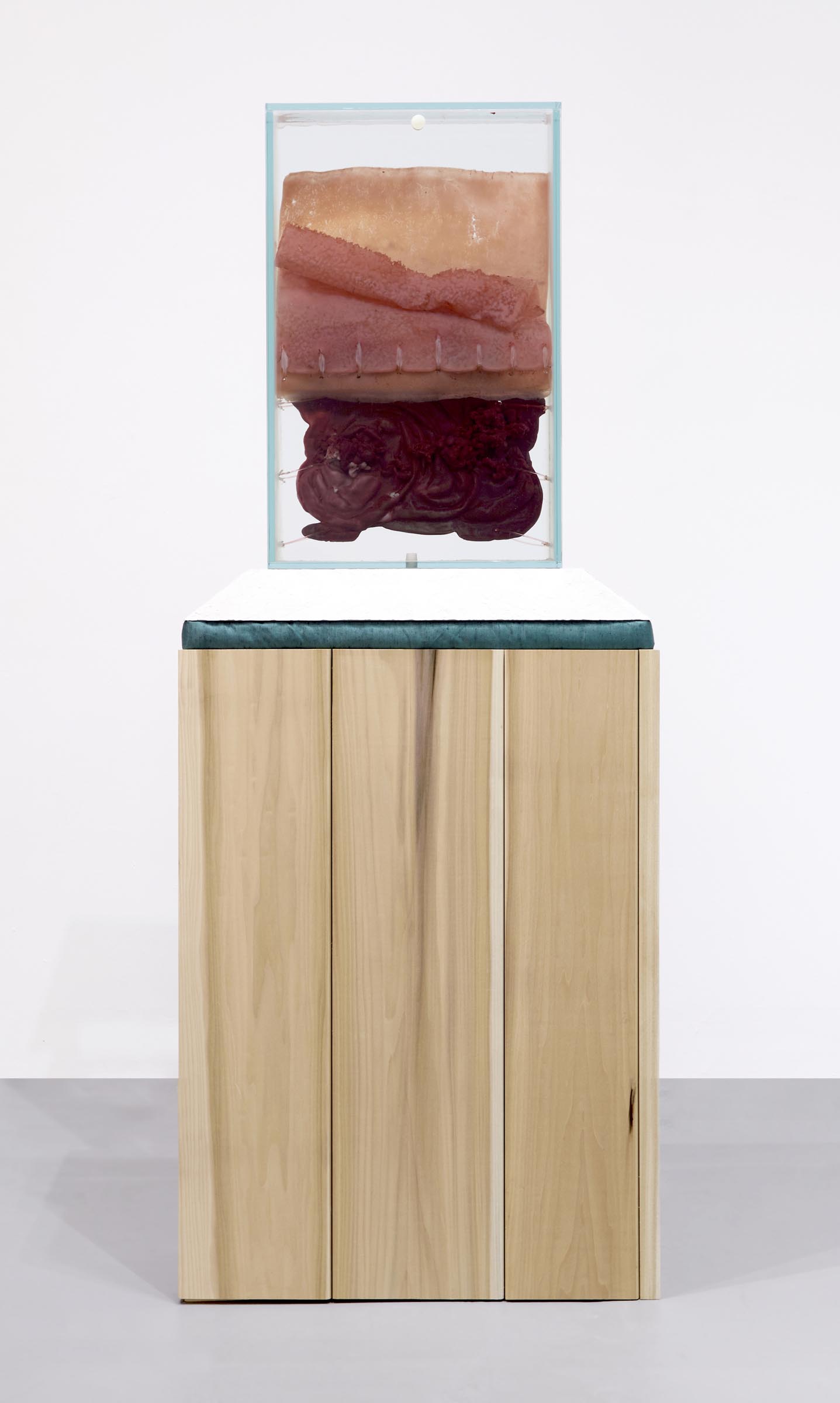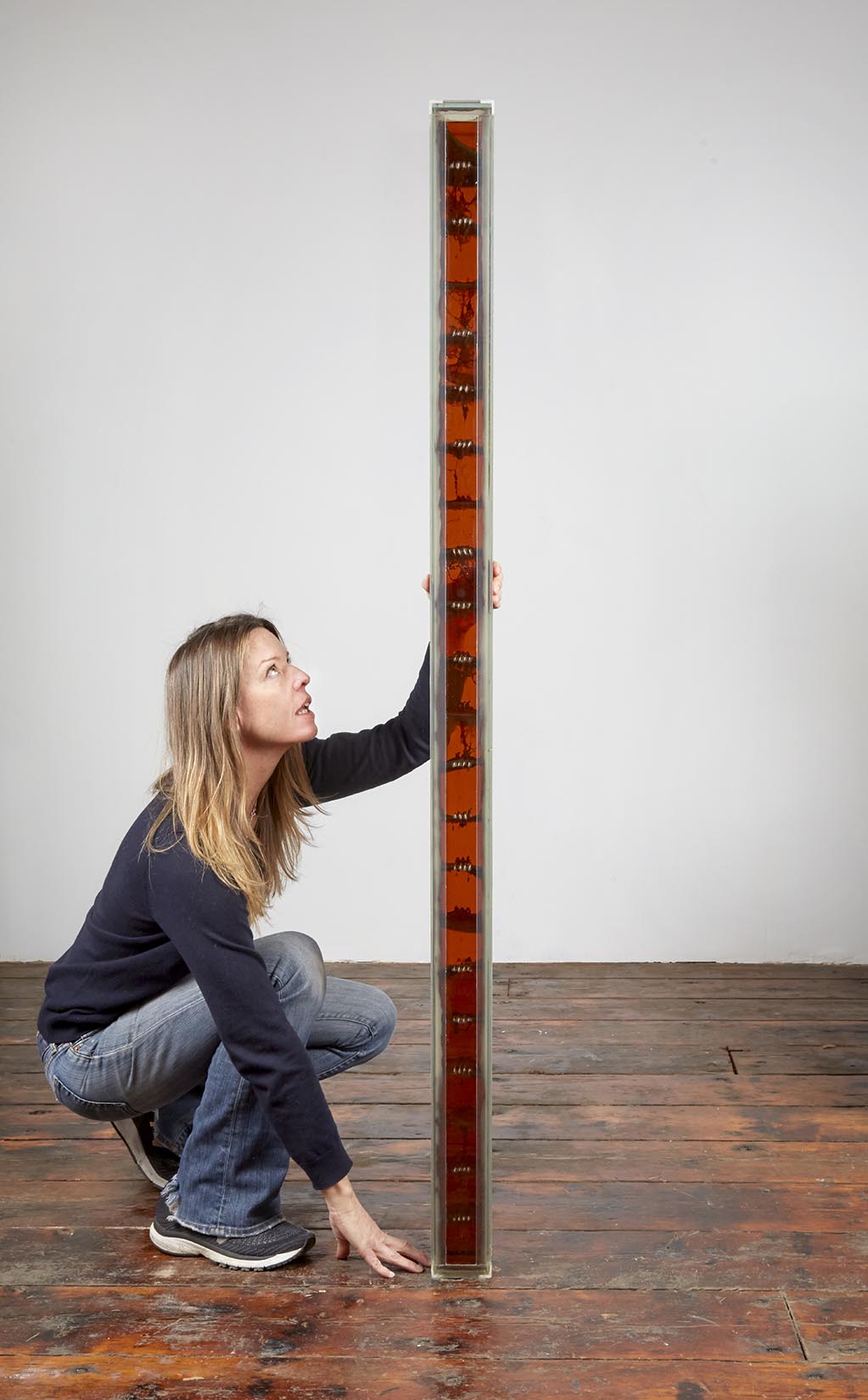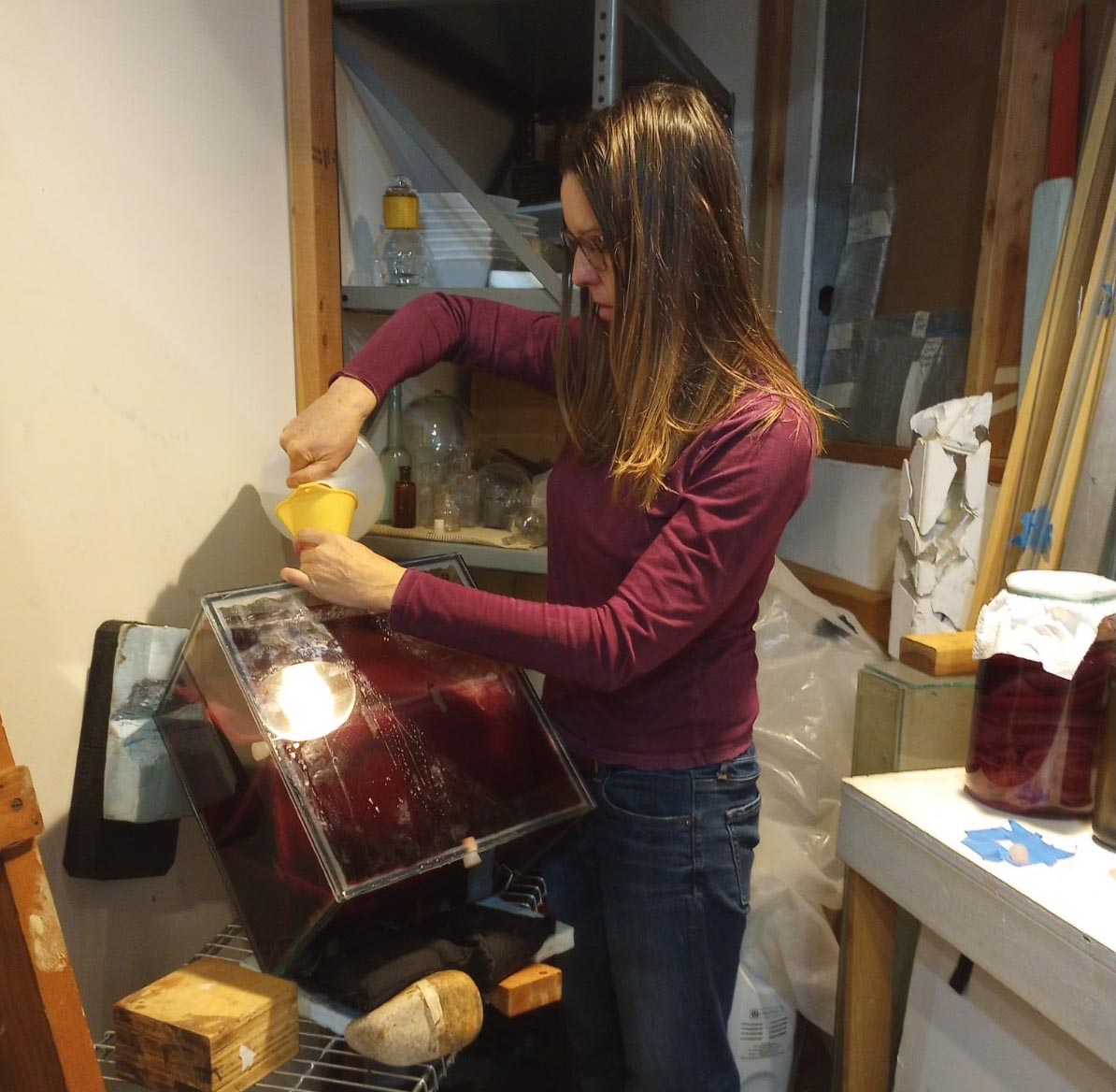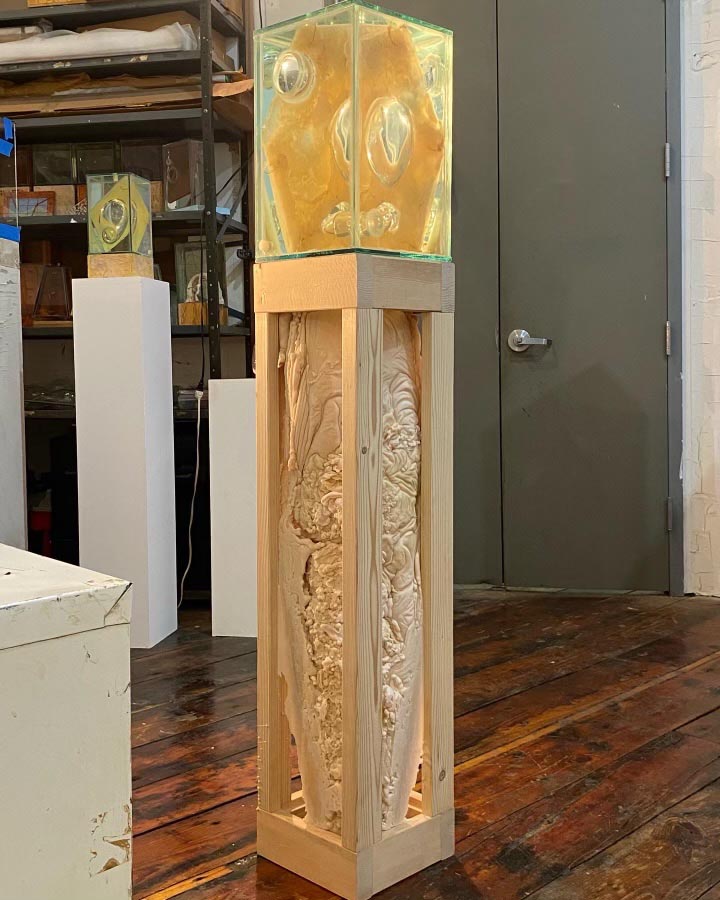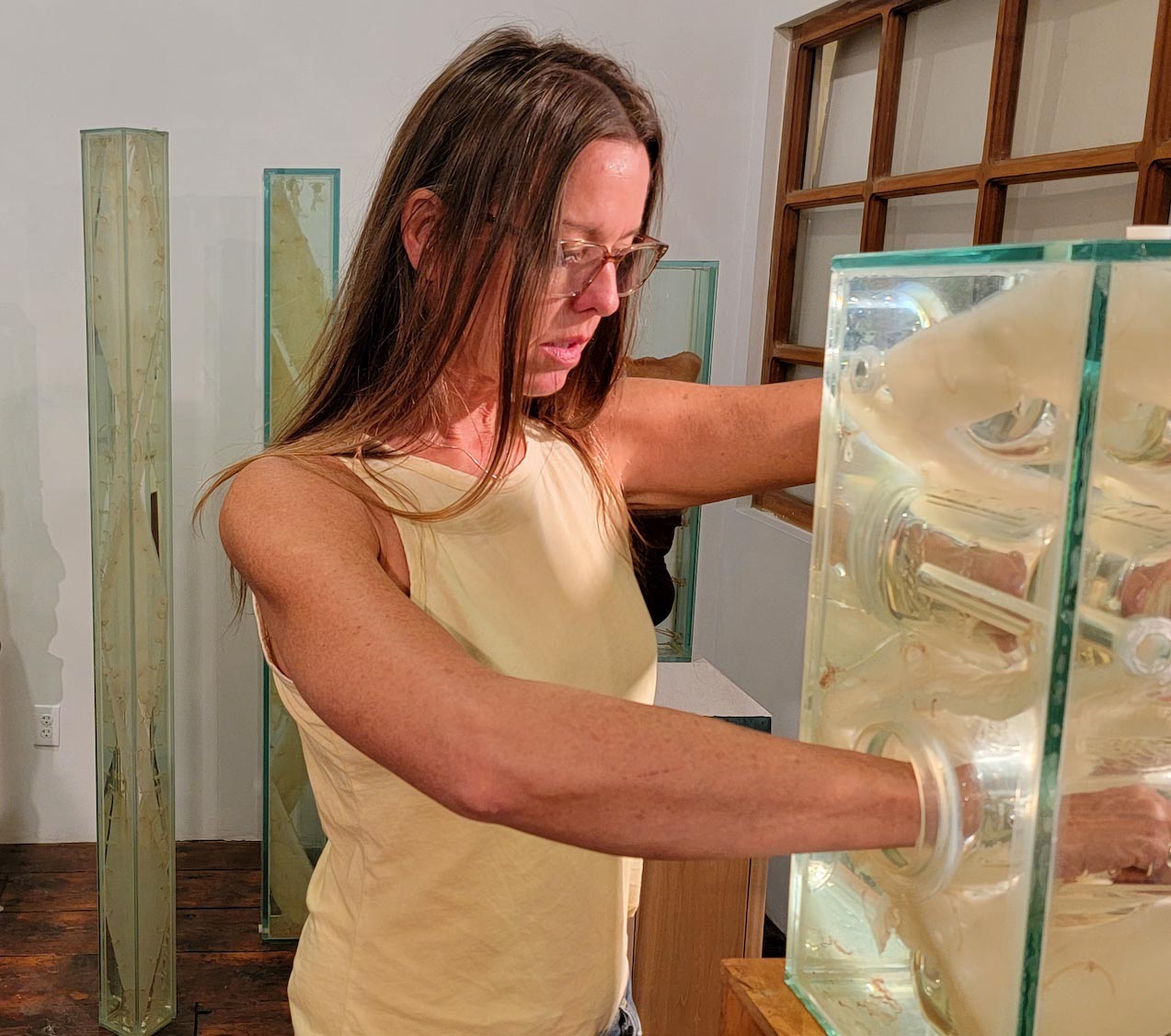
How did you get into making art?
Growing up, I liked to build and take things apart. I collected objects from nature like little frogs, cicada shells, and starfish from the beach. Once I filled a bag with dead jellyfish and left it in my mother’s freezer. My favorite project was the “visible woman” model, an anatomical model with see-through skin and visible organs. I was interested in biology, particularly human anatomy, architecture, and math. In college, I switched my major and schools a few times until I decided to go to art school. When focused on sculpture, these interests began to surface in my work.
Other life experiences surfaced as well. I was a competitive swimmer and spent many hours a day in a pool or ocean. The visual scape of childhood and adolescence underwater had infiltrated. My paintings were abstractions of underwater, some red like inside a womb. Without realizing this connection, I’ve utilized water and liquids in my sculpture from the very beginning.
While in art school, I worked as an ocean lifeguard during the summers. I stayed in a space where I could see the ocean as a long vertical sliver between two other buildings. I would stare at this negative space, and paint the stack of elements in equal sections at all times of day, studying the sun’s effect on each. These vertical seascapes became sculpture; columns of sky, water, and earth compressed into stratified core samples. Versions of seascape, layered with schematic drawings for the sculpture continue in my current works on paper.


What are you currently working on?
I am working on two new sculptures. One has a long amorphous hexagonal plane of cast wax inside a wood frame base that mimics the hexagonal bacterial plane grown in the glass container sitting on top. When slicing a rectangular prism in half on a specific diagonal, the cut connects each of the six faces of the prism, making the slice the shape of a hexagon. With another sculpture, I’ve started to play with subtle lighting on the inside of it. Usually I thoroughly flush the tanks after the bacteria is finished growing but with this, I left a lot of red wine and it glows a mysterious, murky red. Light enables the looker to see the inside more clearly.
I developed a technique to construct living sculptures by collaborating with the fermentation culture acetobacter.
Jennifer Sirey
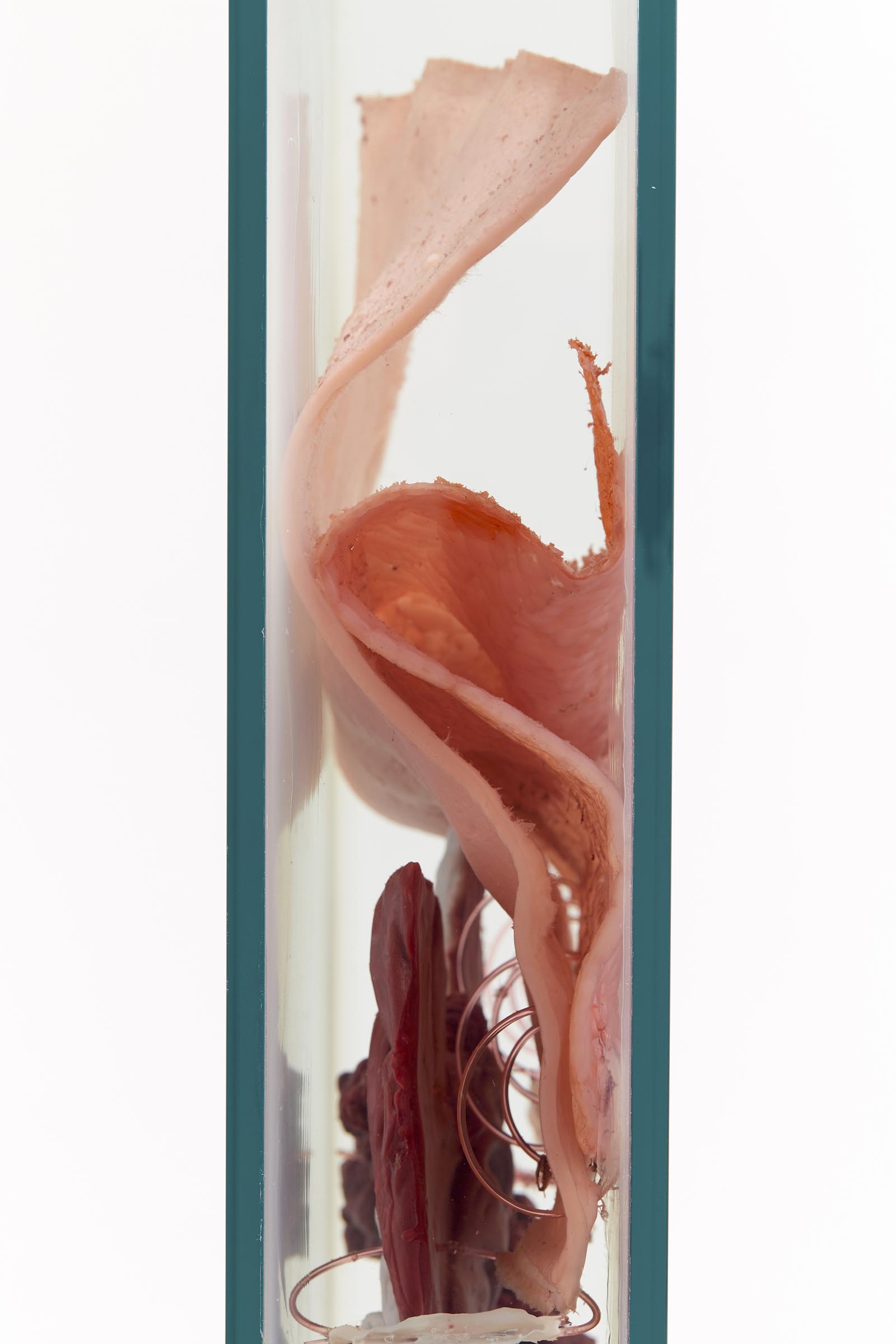
What inspired you to get started on this body of work?
The work I am making now is not actually a separate body from what I started many years ago. I developed a technique to construct living sculptures by collaborating with the fermentation culture acetobacter, that exist in colonies all over the natural world; in air, soil, water, insects, and flowers. I grow this bacteria into liquid filled, monolithic, glass sculptures. The sculptures got wider and shorter, put on pedestals, integrating drilled holes, found object and blown glass intrusions and cast wax forms. The pedestals gradually became sculptural, incorporating materials like cast cement, fabric, metal and wood scraps and found objects. I want the bases to be alive like the inside of the tanks they support. I aim to achieve this by building them with immediate, intuitive responses to material and color, like making a painting, while allowing the material to become itself. I am also interested in seeing inside the bases and through them to the other work. Lately, thinking about manipulations inside the body, for example, major organ surgery, amputations and prosthetics and the effects of this on auxiliary muscles and nerves. As we get older, more of us are still alive only because we are part man made, like Frankenstein. I try to manipulate, organize and understand the mystery inside the tanks by creating structural iterations with organic material.
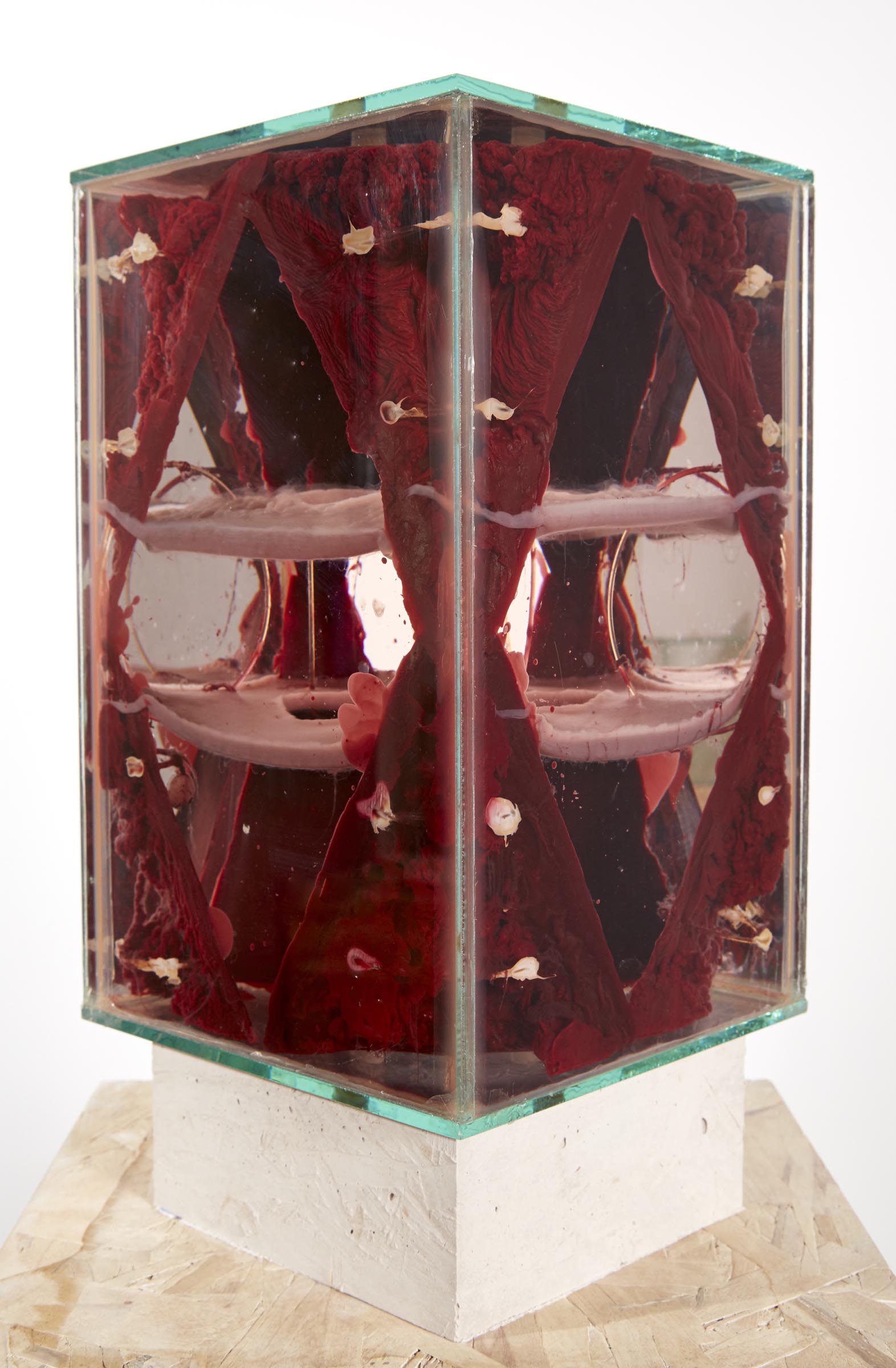
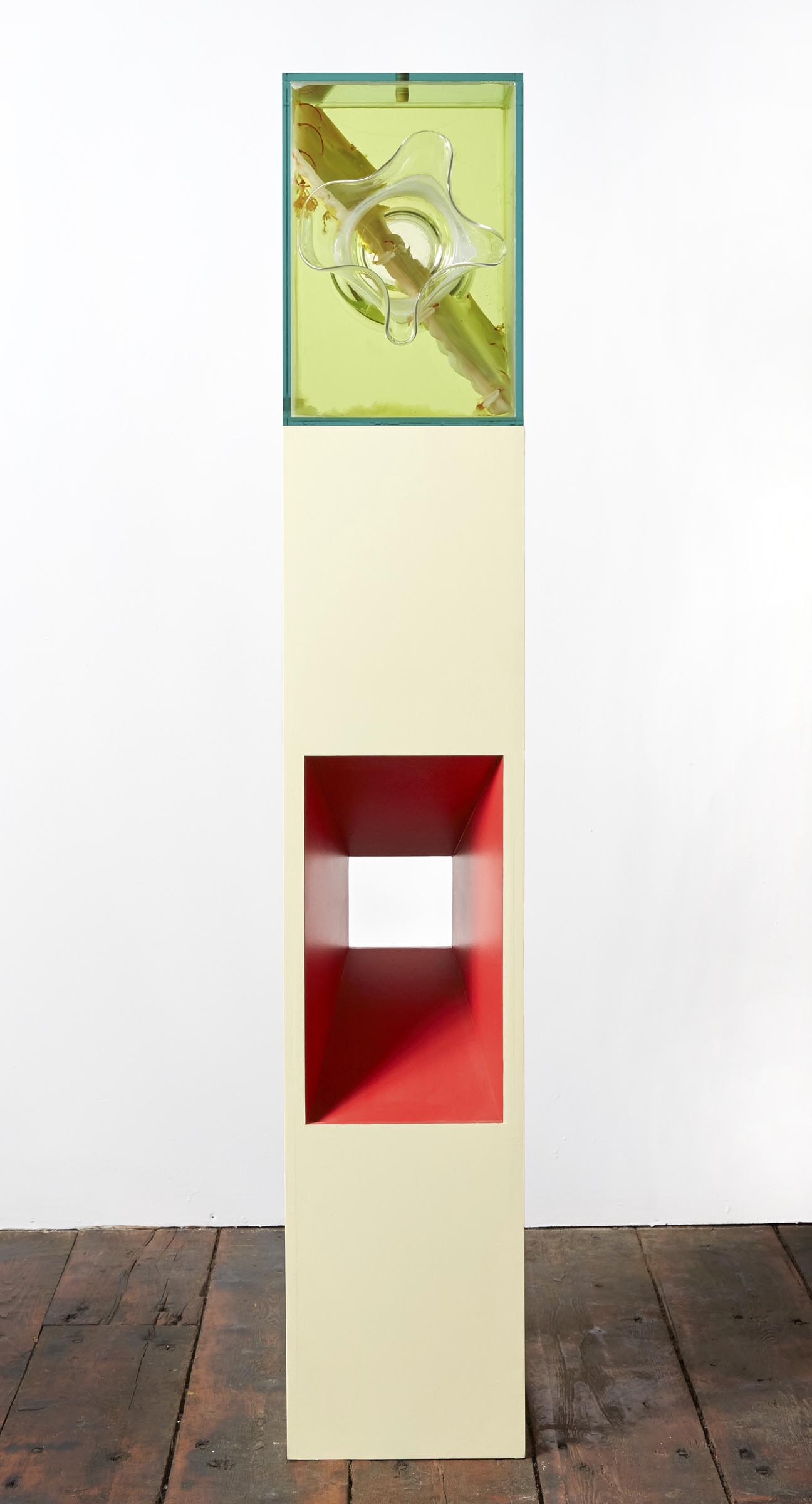
Do you work on distinct projects or do you take a broader approach to your practice?
I focus on individual sculptures but often many at a time. Each piece has it’s own personality and it takes time for me to know what it needs. When I finish a new piece, its like a sudden “freak of nature” standing there in my studio. I sneak up on it from different angles to try to really see it.
The sculptures also communicate to the group as a whole. Currently, there are many sculptures in my studio and as the number grows, the sculptures are forced to stand closer and closer together like a dense forest or a crowded city of buildings and people.
What’s a typical day like in your studio?
There is no typical day because each sculpture can demand an entirely different thing. I use the wood shop at my job and do glasswork at Brooklyn Glass. Sometimes I spend time at the studio staring at the sculptures, tweaking them and taking pictures. I make works on paper at home.
Who are your favorite artists?
This list should be much longer but here are a few initial influences and some more recent that I like and randomly think about…
Brancusi, Eva Hesse, Tony Smith, Ana Mendieta, Paul Thek, Ann Truitt, Robert Smithson, Hiroshi Sugimoto, Jackie Windsor, Donald Judd, Steven Parrino, I.M. Pei, Lauretta Vincerelli, Annie Sprinkle, Per Kirkaby, Rick Owens (especially display objects and furniture) Guo Fengyi, Mrinalini Mukherjee, Magdalena Abakanowicz
Where do you go to discover new artists?
Friends, galleries, museums, internet…
Learn more about the artist by visiting the following links:



